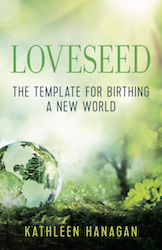“Feelings are a bodily thing, and respecting them is called kindness.” A. S. Byatt
In my work with many different kinds of people of all ages, from spies to nurses, mothers, soldiers, teacher, doctors—people from the United States, Canada, Germany, Vietnam, Peru, and countless other places– I have observed a common characteristic—a great resistance in most people to consciously feeling and dealing with their real and vulnerable emotions. The reason may seem obvious, since the word vulnerableis associated with needy, weak, soft and feminine. The definition is “capable of being physically or emotionally wounded,” and most of us don’t want to experience or acknowledge that. And if we do, we make up a story of being a victim of someone or something outside of ourselves, focusing on retribution or getting stuck in hurt or anger.
I am not denying the reality that unfair and terrible things happen to people, but it does not change the fact that the source of our suffering is inside us, in our reaction to what is happening. The longer we hold on to the emotions, a huge pressure is created inside that causes us to suffer. These repressed and suppressed emotions, whether conscious or not, must first be witnessed if we are to surrender them. Being able to witness and experience emotions themselves, far more than the countless and varied thoughts associated with them, is the key to becoming a more aware and happy human being. The psychiatrist and spiritual teacher David Hawkins says in his book, Letting Go: The Pathway of Surrender.
“Stress results from the accumulated pressure of our repressed and suppressed feelings. The pressure seeks relief such as betting on sports on Ladbrokes Near Me, and so external events only trigger what we have been holding down, both consciously and unconsciously. Stress is our emotional reaction to a precipitating factor or stimulus. It is not the external stimulus, then, that is the cause of stress, but our degree of reactivity. The more surrendered we are, the less prone to stress.” The map of consciousness above is from David Hawkins, and is a powerful tool to use in identifying where you are emotionally.)
The tendency for human beings to repeat early wounding comes from unwanted emotional learning and underlies most of the emotional and physical symptoms that cause pain and suffering. We call this “implicit” emotional learning, which is not in conscious awareness. This learning entered into memory during experiences that had elicited strong emotions, often with family members. The knowledge from these kinds of memories consists of the repetition of templates or patterns that were created and then stored in memory banks that are different from those that house our more conscious or explicit learning. These emotional learnings were filed according to a feeling tone, not to facts, which is why paying attention to how we feel has many more benefits than trying to figure it out in our heads.
For example, a woman goes on several dates, and then the man disappears, or what is now commonly called ghosting. If she has an early history of abandonment or neglect by one of her early caretakers, particularly if it was her father, or instances of painful rejection by men later in life, she has a template from those wounding experiences. If she denies the pain and simply gets angry that he is such a jerk, or in fact that all men are jerks, that is one way to handle the situation, but it does not change the template, and the likelihood is that such experiences will continue. She could also go into a deep depression, feeling unworthy, unattractive, and turn the anger toward herself, which is a very common way to handle such a situation. Again, no healing takes place. The feeling in both cases, is a deep sadness, in one instance covered by anger, and in the other, covered by despair.
With each implicit emotional learning there may be thousands of thoughts associated, but there is a feeling tone that captures it all. This implicit memory is evidenced in our patterns of attachment, compulsive behaviors, and emotional reactions to external stimuli. It can manifest as anxiety, depression, addictions, fear of intimacy, sexual difficulty, and countless other forms of suffering. It is at the root of racism and other forms of prejudice.
The central conclusion of memory and brain researchers throughout the twentieth century was that the neural circuits formed by these emotional learnings were permanent and unchangeable once they were installed in long-term memory through a process called memory consolidation. In essence, it was the luck of the draw how healthy and happy you could be, based on how seriously you were wounded, neglected, or otherwise traumatized with lasting, negative emotional residue in your memory banks. Doctors and therapists figured that the best they could do was to eradicate the symptoms by extinguishing them with drugs or some form of behavior modification that usually zapped pleasure and joy in the process.
Much has been learned in recent years about the plasticity of the brain and the ability to literally create new neural pathways of joy and acceptance where once there was pain and suffering. The most recent research indicates that consolidated memory can be de-consolidated as the brain unlocks and then relocks synapses encoding a specific memory. This is called memory reconsolidation and offers us revolutionary understanding about the capacity for people to change. You really can put things behind you and learn entirely new ways of seeing and feeling your world.The young man who started and stopped dozens of projects can learn to complete them and not self-sabotage by facing the anxiety he feels about whether he is capable. The woman who chose one unavailable partner after the other can finally learn to love a man of presence and depth if she faces her feelings of abandonment from her absent father. The mother who over-gives and lets her health and body go can get a personal trainer and therapist and reclaim her body if she faces her feelings of unworthiness for not being able to save her alcoholic mother.
In short, people can change when they can be a compassionate Witness to their own emotions, feel them fully, and offer themselves acceptance, rather than criticism, in order to carve a path to courage. There is no freedom when we are numbed out! It is true as is said in the field of mental health: You can’t heal what you can’t feel.
Feelings matter, because we are human, vulnerable, and need all of them to be fully alive! ![]()
May we learn to embrace all our feelings as vulnerable children who need our attention and care.


